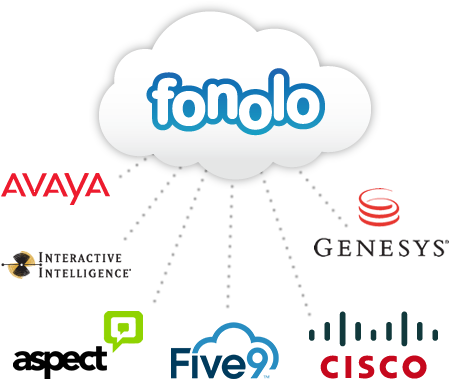 Most companies realize they need a strategy to avoid leaving callers on hold. In fact, we have good evidence that the fraction of companies offering virtual queuing through a call-back solution is growing. But for many companies, call-backs are on the “wish list” for when their call center gets a major upgrade.
Most companies realize they need a strategy to avoid leaving callers on hold. In fact, we have good evidence that the fraction of companies offering virtual queuing through a call-back solution is growing. But for many companies, call-backs are on the “wish list” for when their call center gets a major upgrade.
Does that describe your situation? Are you assuming that your current system is too old for updating and you just have to wait for the new system? If so, we have good news: call-backs can be added to your legacy call center! Quickly and painlessly, too. Read on for more.
Fonolo’s Approach
Traditionally, call-backs were added by installing hardware or software offered by the vendor of the call-center system. There are many in-built virtual hold competitors like this, for example, Avaya sells Callback Assist for its platform and Cisco sells Courtesy Callback for its platform.
Fonolo introduced a completely new way to add functionality to an existing call center: A cloud-based, platform-agnostic approach that is easy to deploy on any call-center.
The secret to being platform-agnostic is that the interaction between the call-back solution and the call center is accomplished purely with phone calls. Because all centers can accept phone calls (by definition!) this makes the Fonolo solution universally compatible.
That sounds simple, but there are a lot of tricky details to get right. We’ve spent the last few years working through those details so that implementation and operation are intuitive for the call center manager. Some of that work is spelled out in our many patents on the topic.
What if Your Platform Has a Call-Back Option?
Many platforms, both on-premise and cloud-based, have at least some form of call-back functionality. Even in these cases, the Fonolo approach has some advantages. It’s tempting to just go with the built-in call-back feature, but there are several downsides to consider:
- If you change platforms in the future, you will have to start over.
- If you have a multi-site or multi-platform scenario, you will need to configure each call-back solution separately.
- If you send some of your calls to a BPO/outsourced call center, the call-back strategy won’t extend to those calls.
Reviewing the Reasons
Here’s a quick review of why call-backs will supercharge your call center:
1) Improving Customer Satisfaction
Everyone hates waiting on hold. Surveys regarding customer service complaints consistently show that waiting on hold near the top of the list. Obviously, eliminating something the causes dissatisfaction will lead to increased satisfaction. However you measure client happiness – NPS, repeat visits, repeat purchases – you are certain to see improvement.
2) Reducing Abandon Rates
When hold times are long, many callers will simply abandon, i.e. hang-up. Abandonment leads to higher repeat calling (which can strain the call center system) and, of course, dissatisfied customers. Offering a call-back reduces abandonment because even if the total wait time is the same, a customer who has signed up for a call-back is very unlikely to abandon. (Our own numbers show a 98% reconnection rate.)
3) Lower Cost
A less obvious advantage of call-backs is the ability to lower contact center costs. When a caller is waiting on hold there’s a phone line kept open, with per-minute telco costs accumulating. If that call is turned into a call-back, the line doesn’t have to be active until the agent is available.
4) Smoothing Out Spikes
If your call center has “spikey” call volume, you’re faced with an extra challenge: If you schedule staff to the peak volume, you will have excess agent capacity at other times. Call-backs help “smooth-out” spikes in call volume by deferring calls (in a customer-friendly manner) to a time when there is excess agent capacity.
For more details on these reasons see these posts:
- 3 Secrets to Successful Call-Backs
- The Do’s and Don’ts for Implementing Call-Backs in the Contact Center
- 7 Signs Your Call Center Needs a Call-Back Solution
Picking a Solution
There are, clearly, many aspects to consider when selecting a call-back solution. It’s important to have a vendor you can trust to make sure all the angles are covered.
For more details on picking a vendor, see Make Call-Backs a Priority. This post includes 6 key questions that you should ask before deciding.
Call-backs are one of the few call center technologies that are truly win-win: Callers have a more pleasant experience and the call center gets a more efficient operation. If you’re exploring this option today, we are happy to help at any time. Sign up for a live demonstration or watch our short demo video to learn more about how call-backs work.

Discover the Contact Center Trends That Matter in 2024
Dig into industry trends and discover the changes that matter to your business in the year ahead.
